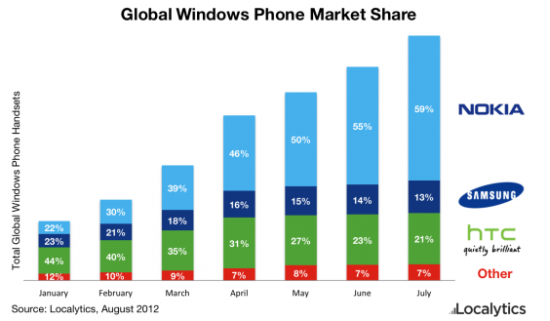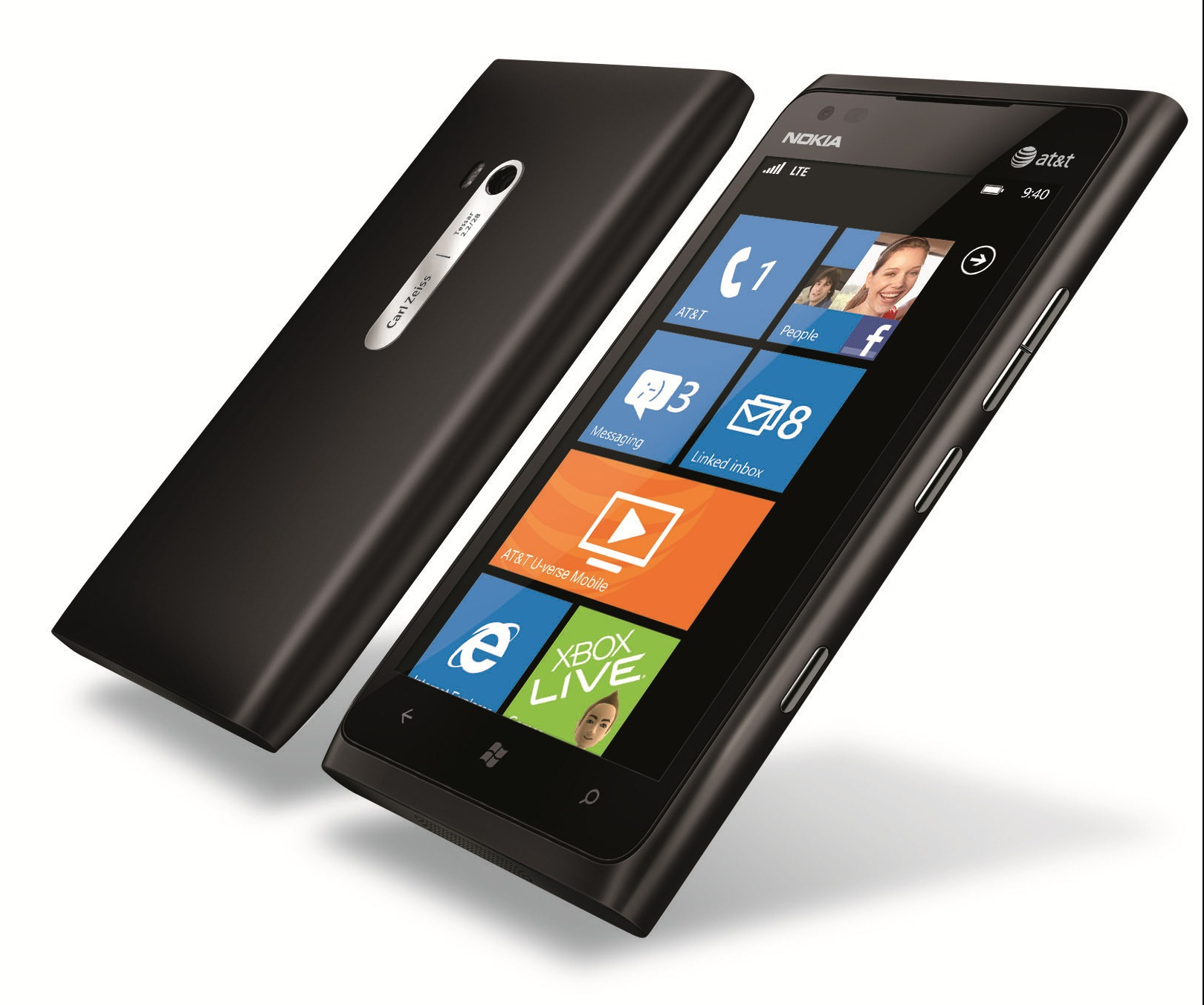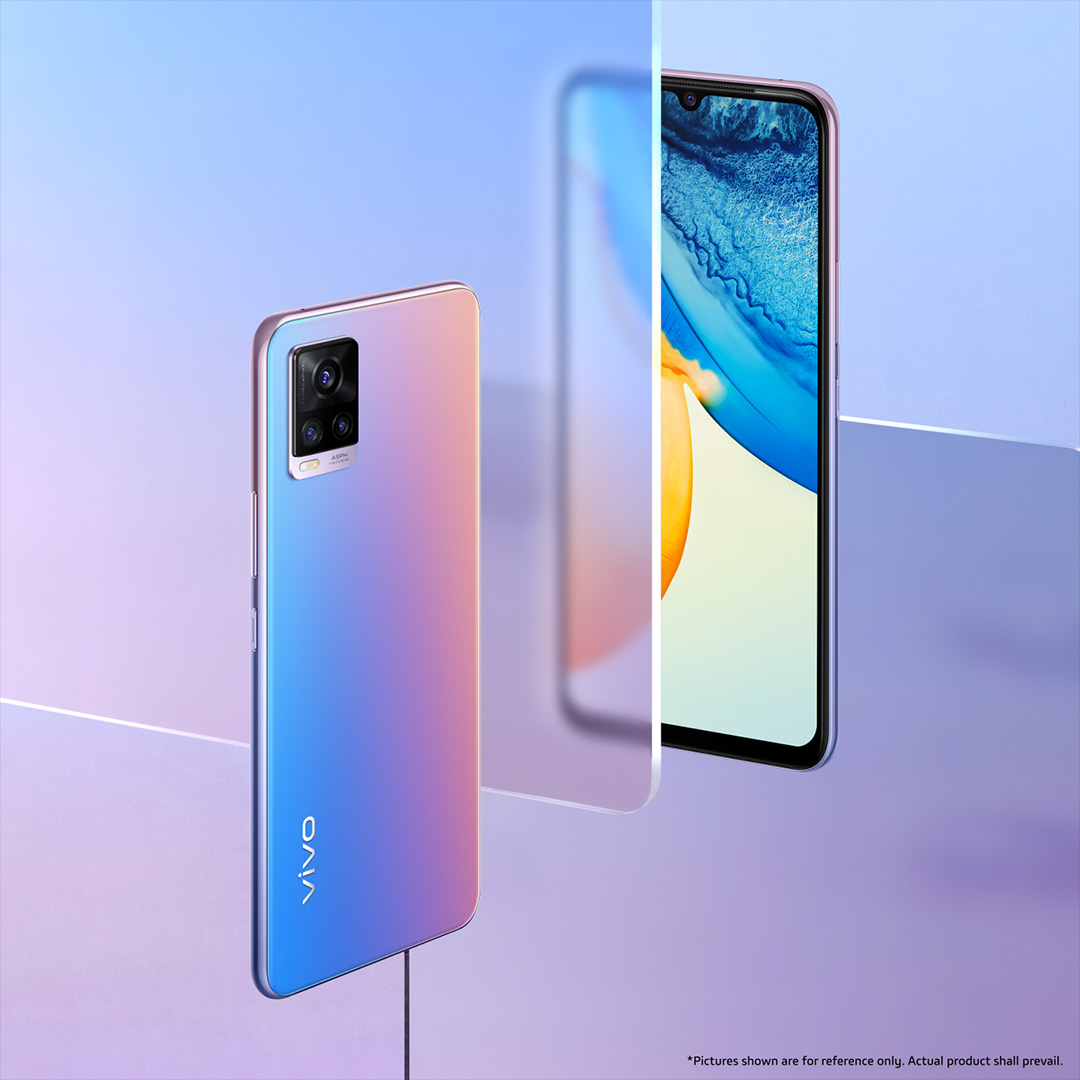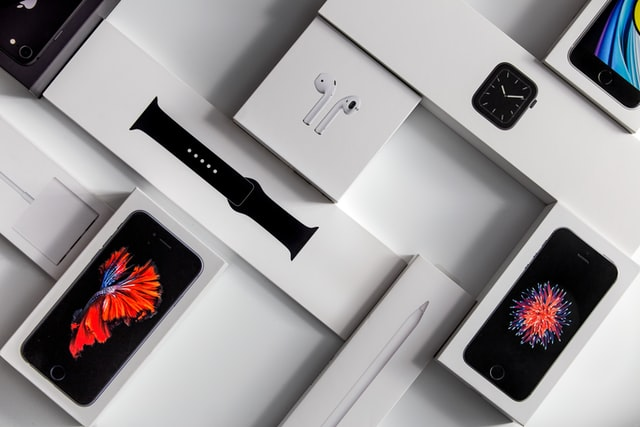Nokia Windows Phone sales have been a hot topic since the brand’s pivot towards Microsoft’s mobile operating system. As the competition in the smartphone market intensifies, many are curious about Nokia’s place in this rapidly shifting landscape. Despite ambitious projections, some analysts express skepticism about the actual sales figures that Nokia could achieve in the coming year. The excitement generated at Microsoft’s CES 2012 presentation shows a strong commitment to revitalizing Nokia and potentially reclaiming its smartphone market share. However, with the looming success of competitors and previously impressive sales figures from Nokia’s past, enthusiasm surrounding Nokia Windows Phone sales may be tempered by reality.
The performance of Nokia’s smartphones under the Windows Phone banner has sparked significant interest from industry watchers and consumers alike. With rival brands rapidly innovating and gaining market traction, how Nokia’s devices fare amidst this fierce competition is crucial. The recent unveiling of new models has generated buzz, but concerns linger regarding the potential for a sustainable comeback in what was once Nokia’s domain. These smartphones, equipped with Microsoft’s software, face the challenge of breaking through a saturated marketplace dominated by established players. Observers are eagerly analyzing how these factors will play out as Nokia strives to regain its former glory in the mobile arena.
Nokia Windows Phone Sales: A Reality Check
Despite the fanfare surrounding Windows Phone, the forecast for Nokia Windows Phone sales this year seems frankly exaggerated. Analysts have projected numbers as high as 37 million units, but it is essential to contextualize this with Nokia’s historical sales performance. In its heyday, Nokia dominated the smartphone landscape, selling a staggering 472 million devices in 2008 alone and capturing nearly 40 percent of the market share. Comparing today’s expected sales to these figures gives a sobering perspective; it underscores the uphill battle Nokia faces in an increasingly competitive market.
While some may argue that the magic of Windows Phone will propel Nokia to greater heights, it is crucial to consider the broader picture. Competitors, primarily Apple and Android manufacturers, have continuously shown robust sales numbers, leaving Nokia Windows Phone sales looking less impressive by comparison. In the fourth quarter of 2011, the smartphone segment swelled, with the iPhone achieving numbers that exceed Nokia’s annual projections, emphasizing a stark contrast in consumer preference.
The Competition in the Windows Phone Market
Windows Phone is undoubtedly a unique offering in the smartphone market, but its competition remains fierce. Major players like Apple and Samsung have established formidable dominance, with their constant innovation and vast ecosystems making it challenging for new entrants, including Nokia. The competition isn’t just about hardware; software and ecosystems play a significant role. With applications consistently being a stronghold for iOS and Android, Windows Phone must entice developers to grow its app ecosystem to remain relevant in a saturated market.
Moreover, the notion of “Get smoked by Windows Phone” is more than just a catchy slogan; it encapsulates the uphill battle that Microsoft faces in promoting this platform. Given the immense market share that the competition commands, Windows Phone’s performance is scrutinized under a magnifying glass. Many analysts and tech enthusiasts are questioning whether Windows Phone can sustain interest amidst such powerful rivals, thus making it imperative for Microsoft to ensure that their marketing and product offerings clearly stand out.
Nokia’s Smartphone Market Share: The Decline
Nokia was once synonymous with mobile technology, but its smartphone market share has suffered a dramatic decline in recent years. In 2008, Nokia held a commanding 38.6 percent market share, but fast forward to the end of 2011, and the landscape had changed drastically. Research indicated that Nokia’s smartphone market share had taken a hit, primarily due to the rise of competitors such as Samsung. The transition from being a market leader to struggling to maintain even a fraction of that once-dominant presence illustrates the significant changes in consumer preferences and technology evolution.
The decline in Nokia’s smartphone market share highlights the broader issue of brand loyalty and innovation. Consumers have increasingly gravitated towards brands that not only offer cutting-edge technology but also provide superior ecosystems. As a result, Nokia’s shift to Windows Phone, while promising, may not be enough to win back the loyalty of former customers or attract new ones. To recover from the losses in market share, it is critical for Nokia to re-establish itself not just as a manufacturer but as an innovator capable of delivering products that resonate with the current consumer base.
Microsoft at CES 2012: Launching Lumia
At the Consumer Electronics Show (CES) 2012, Microsoft made a significant impact with its presentation of new Windows Phone devices. Notably, the unveiling of the Lumia series showcased a new direction for Nokia under Microsoft’s stewardship. The Lumia 710 and Lumia 800, designed to introduce unique features like an intuitive user interface, aimed to capture consumer interest. Unfortunately, the hype surrounding Windows Phone required more than just a flashy display to compete with established giants like Apple and Samsung.
Microsoft’s presence at CES also represented an essential step towards revitalizing the brand’s image in the smartphone segment. The corporate strategy included fortifying partnerships with carriers like AT&T to facilitate distribution, particularly for its flagship device, the Lumia 900. However, questions still linger about whether these efforts would translate into substantial market contributions amidst robust competition. As Microsoft focused on the features of the Lumia lineup, the company needed to ensure that these devices not only appealed aesthetically but also offered a compelling reason for customers to switch from their current smartphones.
The Impact of Lumia 900 Release on Nokia’s Future
The release of the Lumia 900 was highly anticipated and seen as a critical turning point for Nokia’s future in the smartphone market. As its flagship device, much would be riding on the success of the Lumia 900 to reinvigorate the brand’s declining fortunes and re-establish a foothold within a highly competitive landscape. Analysts were hopeful that with its promising features and user-friendly interface, the Lumia 900 could entice current smartphone users looking for something different from the mainstream options available.
However, it remains to be seen whether the initial excitement over the Lumia 900 can sustain momentum in the long term. User reviews and market performance will ultimately dictate its success as Nokia seeks to redefine its identity in the smartphone arena. For Nokia, the Lumia 900 symbolizes not just a new product launch but a potential comeback narrative as the company strives to capitalize on its rich history and technological advancements.
The Future of Nokia: Can a Comeback Be Achieved?
As a longtime fan of Nokia, the question of whether a comeback is possible remains at the forefront of discussions surrounding the brand’s future. With its storied history in the mobile industry, there is hope among enthusiasts that Nokia can rise from its current challenges by leveraging its strengths. The integration of exceptional hardware with Microsoft’s software could play a pivotal role in redefining its market position and restoring consumer trust.
Yet, the path to recovery will not be easy. With competitors like Apple and Android manufacturers dominating market strategies and consumer loyalty, Nokia’s revival relies heavily on its ability to innovate and respond to market needs dynamically. To make a credible comeback, Nokia must offer compelling features and value that resonate with today’s savvy consumers, as well as establish a robust marketing strategy that highlights its strengths in this competitive landscape.
Smartphone Sales Predictions for Nokia: Eyeballing the Market
Sales predictions for Nokia reflect a complicated view of the smartphone market’s trajectory in the coming years. Analysts project that Nokia may ship approximately half as many smartphones in 2012 compared to its figures from four years past. This forecast signifies a stark contrast to the peak of Nokia’s sales, showcasing how rapidly the mobile landscape has shifted. Industry dynamics and consumer inclinations indicate that prices, unique features, and branding will play vital roles in influencing how Nokia fares against its competitors moving forward.
The emphasis on projection, rather than actual sales, raises concerns about the brand’s short-term viability in a market where innovation is the key to survival. As the smartphone landscape evolves, Nokia must ensure that it aligns with current consumer trends—spotlighting technology that enhances daily life while also supporting developers who can expand its app ecosystem. Only through comprehensive planning and execution can Nokia hope to regain its footing and elevate its smartphone sales to competitive levels.
Nokia’s Legacy: The Lessons Learned from the Past
Nokia’s legacy in the mobile industry is marked by both triumph and adversity. As the pioneer in mobile technology that once enjoyed the largest market share, it serves as a case study for understanding how rapid technological changes and consumer preferences can impact a brand. The downfall illustrates critical lessons for companies on the importance of innovation, adaptability, and maintaining consumer trust. Nokia’s journey embodies the ethos that even the most successful brands can falter if they fail to evolve with the market.
The ultimate takeaway from Nokia’s experiences is the necessity to embrace change and leverage new technologies. As the smartphone space continues to outpace expectations, brands must not only adapt but also anticipate the shifts in consumer behavior. For Nokia, it is vital to draw from its historical strengths while cultivating a forward-looking mindset that prioritizes innovation and market relevance, ensuring that its legacy transforms into a narrative of resilience and success.
Frequently Asked Questions
What factors are affecting Nokia Windows Phone sales in 2023?
Nokia Windows Phone sales have been influenced by a variety of factors including stiff competition from Android and iOS devices, changes in consumer preference, and Nokia’s market strategies. As consumer expectations evolve, Nokia’s comeback efforts and the introduction of new models are critical in driving sales. However, the overall market share for Nokia remains a shadow of its former dominance.
How does Nokia’s smartphone market share compare to its competitors?
As of 2023, Nokia’s smartphone market share is significantly lower than it was during its peak years. While competing against giants like Apple and Samsung, Nokia’s Windows Phone sales have struggled to regain market traction. In the competitive landscape, Nokia’s share remains limited as it seeks to redefine itself amidst the robust growth of Android and continued popularity of the iPhone.
What was the significance of Microsoft at CES 2012 for Nokia Windows Phone?
At CES 2012, Microsoft’s unveiling of various partnerships and promotional strategies for Nokia Windows Phone played a pivotal role in generating excitement and visibility for Nokia’s devices. This event marked a crucial moment for Nokia’s brand as it aimed to re-establish its presence in the smartphone market alongside Windows Phone’s unique features.
What impact did the release of the Lumia 900 have on Nokia Windows Phone sales?
The Lumia 900 was crucial in positioning Nokia within the competitive landscape of smartphones. Anticipated as a flagship device, it was expected to boost Nokia Windows Phone sales significantly. However, the actual sales numbers indicated that, while there was initial interest, it fell short compared to competitors like the iPhone, underscoring the challenges Nokia faced in reclaiming market share.
Can Nokia make a comeback in the smartphone market with its Windows Phone sales?
A comeback for Nokia hinges on a few factors, including innovative technology, effective marketing strategies, and leveraging the strength of the Windows Phone ecosystem. While Nokia enthusiasts remain hopeful for revitalization, success depends on the company’s ability to resonate with modern consumers and compete effectively in a saturated market.
How does Nokia Windows Phone sales compare to the past?
Nokia Windows Phone sales today, projected around 37 million units for 2023, starkly contrast with their peak sales figures where they dominated the market with hundreds of millions of units sold. The decline reflects both the intense competition and Nokia’s transitional challenges as it seeks to redefine its brand in a rapidly evolving smartphone market.
What challenges did Nokia face in the smartphone market after 2011?
Post-2011, Nokia faced several challenges including the emergence of stronger competitors like Samsung and Apple, slow adoption rates of its Windows Phone operating system, and internal decisions regarding software and hardware alignment. These challenges led to a diminishing market share and a reevaluation of its sales strategies in the face of rapid technological advancement.
What market trends influence Nokia Windows Phone sales in 2023?
Market trends impacting Nokia Windows Phone sales include the increasing reliance on Android and iOS ecosystems, consumer preferences for diverse app offerings, and the growing demand for cutting-edge features in smartphones. As these trends continue to shape consumer choices, Nokia must adapt its strategy to align with current demands.
Are Nokia Windows Phones still relevant in today’s market?
Currently, while Nokia Windows Phones maintain a niche appeal among enthusiasts, they lag behind Android and iOS devices in terms of sales and market presence. To stay relevant, Nokia must innovate its devices and leverage unique features to attract new users while catering to its loyal fanbase.
What is the outlook for Nokia Windows Phone sales going forward?
The outlook for Nokia Windows Phone sales remains cautious. Unless Nokia can introduce compelling new devices and effectively market them, sales will likely continue to reflect a struggle against powerful competitors. However, opportunities for growth exist if Nokia can build on its legacy and deliver products that resonate with today’s consumers.
| Key Point | Details |
|---|---|
| Nokia Windows Phone Sales Projections | Morgan Stanley predicts 37 million units, but this is significantly lower than past performance. |
| Historical Sales Data of Nokia | In 2008, Nokia sold 472 million devices, holding a 38.6% market share. |
| Decline in Market Position | As of 2011, Samsung surpassed Nokia in smartphone sales, indicating a significant market shift. |
| Impact of Operating Systems | Nokia’s shift to Windows Phone has resulted in lower sales volumes compared to the previous Symbian OS. |
| Current Product Offerings | Nokia introduced the Lumia series, including models 710, 800, and 900. |
| Competition with Other Brands | The iPhone’s sales in a single quarter have been higher than Nokia Windows Phone’s projected annual sales. |
Summary
Nokia Windows Phone sales forecasts for 2012 seem to be overly optimistic, predicting 37 million units, a stark contrast to their historical successes. From their peak in 2008 with a market-leading 472 million devices sold, Nokia has faced significant challenges and competition. As they strive to revitalize their brand with the Lumia series, it remains to be seen if these efforts can translate into a market comeback against the backdrop of dominant competitors like Apple and Android.







